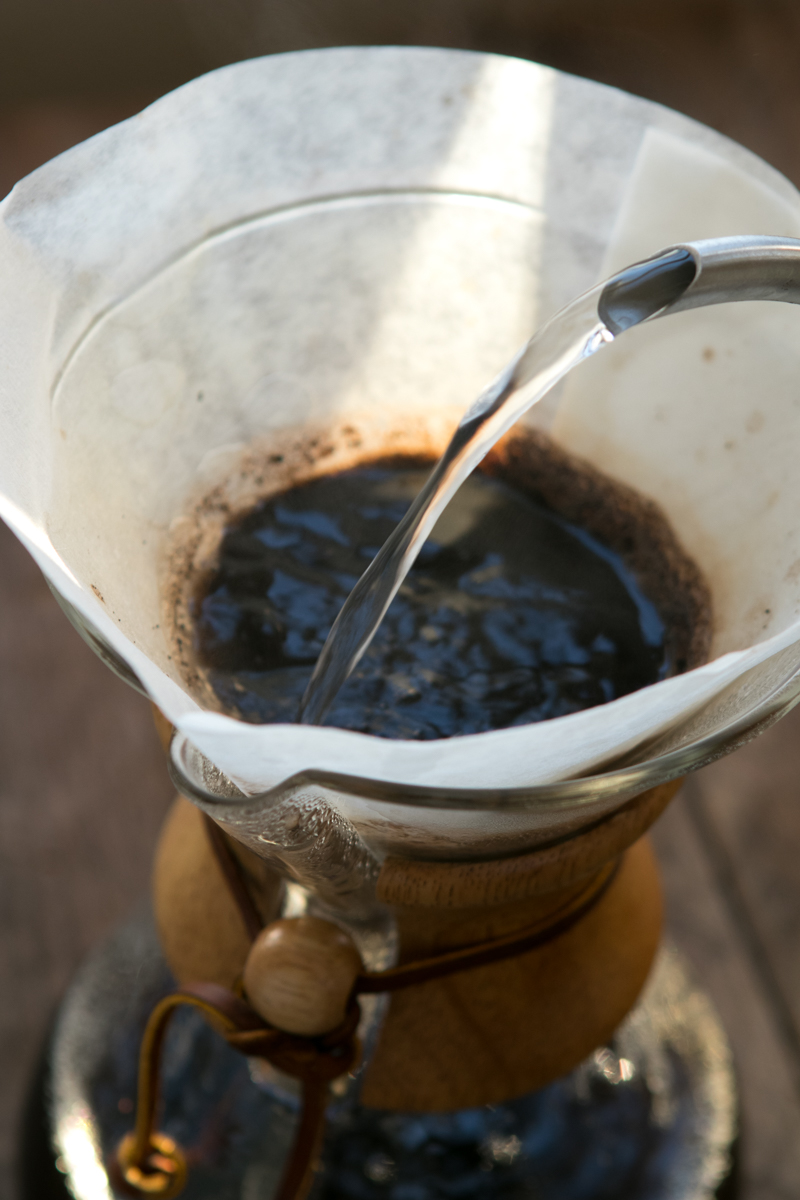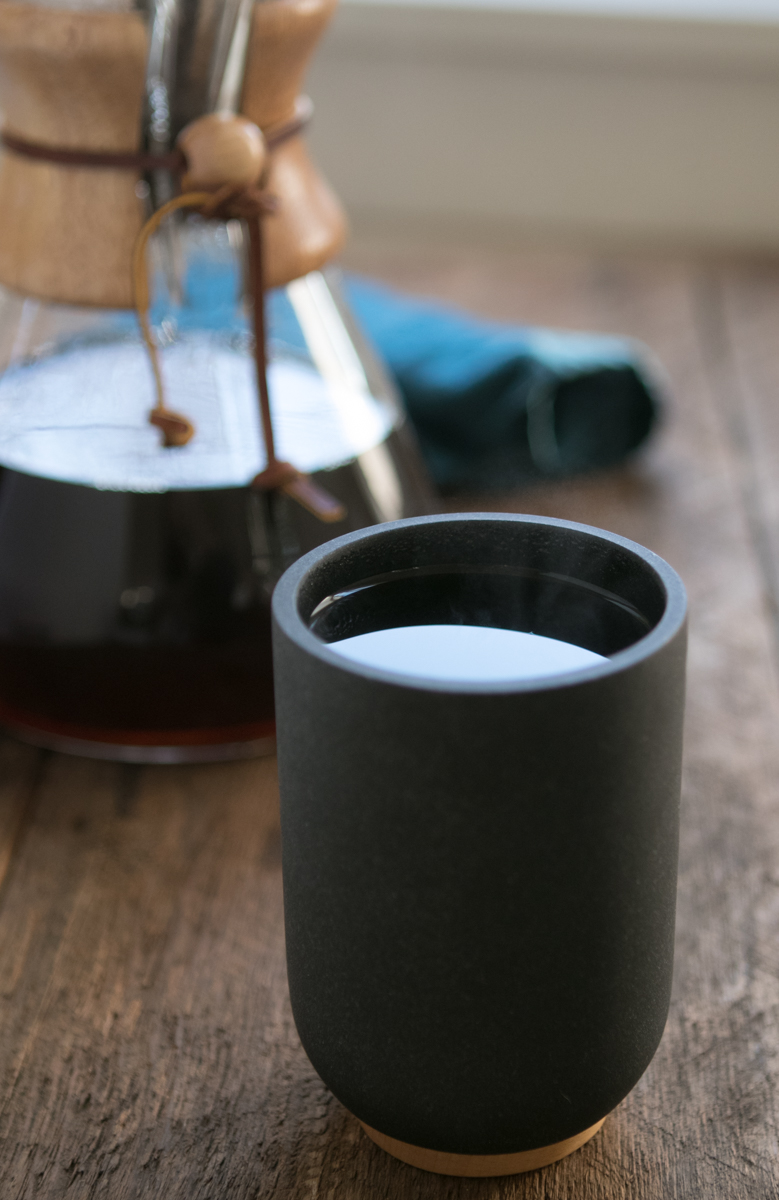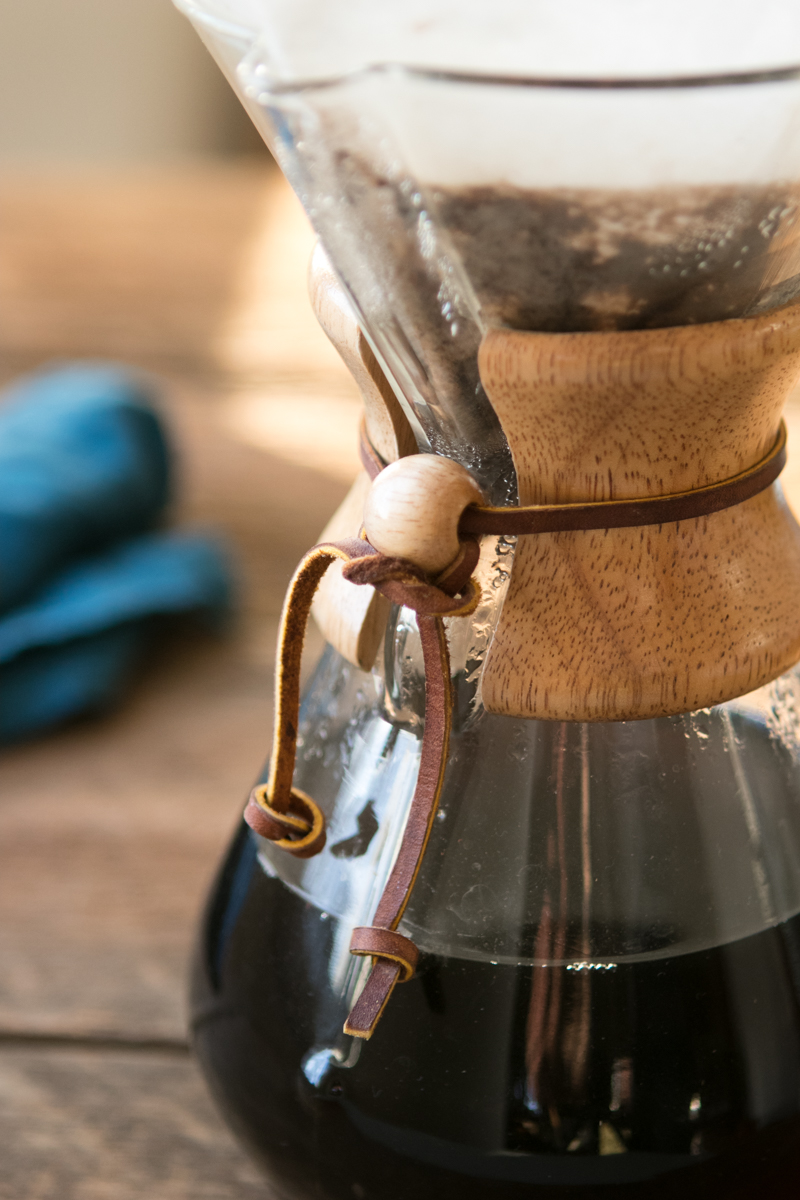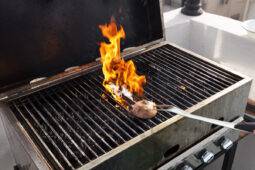On Coffee Makers: Don???t Put a Machine Between You & the Most Important Drink of the Day

When I was a kid, my parents' old Mr. Coffee broke. Because money was tight, it wasn't replaced for some time. I remember waking up one morning and finding my mom making a cup for herself by perching the brew basket from the broken maker over a mug and pouring boiling water from a kettle.
For me, seeing this bit of kitchen MacGuyvering became a truly paradigm-shattering moments. Until then, I thought coffee required an electric drip machine — that it was the only way coffee could be made at all. But seeing this patient pouring of water over grounds, it became clear that the machine wasn't necessary. Some things you really can make yourself.
Of course, I get it. Machines are amazing, and waking up to an already brewing pot when you stumble out to the kitchen on a chilly winter's morning is a modern wonder. But there's something to be said for taking the electric machine out of the equation entirely, especially if you are the kind of person who is invigorated by making things. Taking the time to carefully heat your water, thoughtfully grind your beans, warm your mug, execute a technique… This kind of attention makes your cup something extraordinary, and fills your morning with inspiration enough to match the aroma of your beans.

But there's an even bigger reason to dump the electric machine altogether. Coffee is, in its rich and complex heart, a ritual that defines our morning. Consider how many other drinks define a time of day. For many of us, coffee even becomes part of how we experience the passage of time itself––one cup leading to another, morning after morning, a companion as constant as the Sun. To craft your coffee by hand is to participate in the ritual and embrace the chance to make something with your own hands. Its a opportunity that is squandered if you outsource the labor to a machine and pass by a hands-on craft for the sake of convenience.
But there's more. The call to craft your cup has never been more relevant than now when a true coffee renaissance has filled the world with beans that are the product of passionate producers in the coffee-growing regions of the world. (For just one extraordinary example, Dave Eggers' soon-to-be-released The Monk of Mokha tells an unbelievable true story of one such producer.) Building on the diligent work of farmers and processors are dedicated and skilled local roasters who bring these coffees to shops and stores in cities across the country. These include big/small outfits like Stumptown or Blue Bottle, but also smaller roasters like San Antonio's Merit Roasters, Lousiville's Quill's, Portland's Coava, Grand Rapids' Madcap, Toronto's Quantum Coffee or Cleveland's Rising Star (just to name some personal favorites.) Solely on the grounds of taste (pardon the pun), it would be a shame to pass up these offerings for commodity beans or wasteful pods. But once you have your hands on beans that have been lovingly farmed and expertly roasted, it is an outright calamity to put them at the mercy of a lukewarm drip machine and a scorching hot-plate.

Crafting your cup does require some specialized equipment, but nothing too crazy. The most important element in brewing coffee, other than the quality of your beans, is water that is heated to 205 F and which can be controlled while being poured. A gooseneck kettle is ideal for this––Hario's 1.2L is a classic.) Next, a digital food scale is critical to measure your coffee to water ratio so that you get a consistent brew every time. Finally, you need a grinder that produces a consistent grind (which means an old blade grinder will not suffice.) Large format grinders used in cafes and restaurants can go for thousands of dollars, but fortunately cheap burr grinders––which grind beans through specialized grinding plates––are on the market. (And you can even go with a manual grinder if you want a brief workout with your morning libation.)
The final touch in embracing the ritual and crafting your cup is deciding on the brewing method that you prefer––you don't have to follow my mom's example and cannibalize your auto drip basket. The world is now filled with different pour over and press options. The one you choose depends on your own feel, your own taste, and the kind of craftsperson you are.

French Press
This classic option is based on a high-contact brewing method in which coarsely ground coffee is steeped directly in water and filtered with a fine mesh that allows coffee oils and the smallest particulates remain in the cup. When done well, the presence of these oils makes for a cup that has a raw, brash coffee-ness that is really unique. The best cups of pressed coffee I've have a look that is almost like an intensely spiced curry, with the oils laying atop the surface of the cup. Here is Stumptown's tutorial on using a French press.
Aeropress
This connoisseurs' favorite involves just enough machine and technique to make yourself feel like a specialist. Using the popular, inverted method, you can go from grind to completed cup in less than two minutes. The brew you get results from a process of steeping grounds in water, but the brew is pressed through a paper filter that leads to a clear, crisp cup. Once you've pressed the coffee out, you are left with a neat little puck of coffee grounds that is easily popped into the garbage, making for an ideal brewing method in offices, dorms, or on the go. Here's Blue Bottle's tutorial for using the aeropress.
Chemex
If you're not afraid of learning a little technique and executing a careful brew, the chemex produces a wonderful, almost tea-like brew that is bright and expressive. If you want to get something special from your beans, the coffee that comes from a well-made chemex is simply perfect. The filters fit into the gorgeously designed carafe for a cone-style brew, but their thickness makes for a pristine cup that is unlike any other method. Learning to brew a chemex is a process that involves practice and patience. But what effort and skill you put in is amply rewarded. Here's La Colombe's tutorial for making a chemex.
Pour Over Options
One notch below the chemex on the difficulty scale are some of the other pour over methods available, and which have become hallmarks of the so-called “third wave” coffee shops that have filled trendy neighborhoods and towns. Here the options––like Hario's V60, the Kalita Wave, or the Clever Dripper––all have virtues and peculiarities. But they all produce exceptional brews and are straightforward enough for daily use. Once you decide which one you are comfortable with, it will become a constant companion for your morning's most important drink.

Some things are worth taking time to do properly. And doing things properly makes the time you take feel worthwhile. Don't let a machine produce something that merely passes for coffee. Craft your cup. Embody the ritual. Be the coffee maker.









